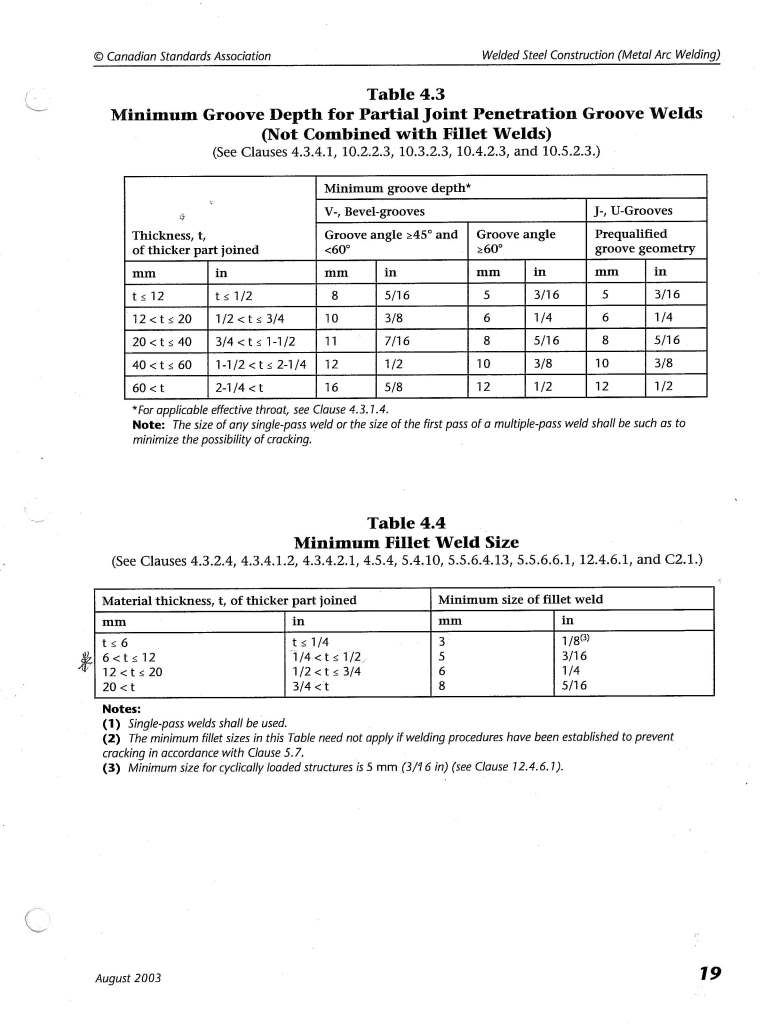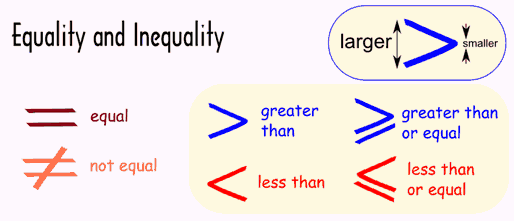Sometimes it is not so much knowing which symbol is which, as much as knowing how to put them in order when it reads thus: 3/8 < T < 3/4. We know that both symbols are the 'less than' symbol. But many people really get confused trying to figure out what size is indicated. Since it does not have, in this example which is one of the lines of Table 4.2, the 'equal to' line under the 'less than' symbol we are referring to a piece which is larger than 3/8" and smaller than 3/4" wall thickness ( 'T' ). If the 'equal to' line were included then whichever side it was on would be inclusive of that dimension as well. Put it in with the first 'less than' arrow and it would mean that 'T' is equal to or greater than 3/8" but still less than 3/4" (even if only a couple of thousandths less, use your micrometer if need be, your 3/4" plate may only be .73 which would allow it's inclusion).
Now if you look at Table 4.2 you will notice the lines just above and just below the one I used include the 'equal to' line under the symbols which means they include the thicknesses excluded by the line I used as my example. So you start with material equal to or greater than 1/8 and go up to and including 3/8 (1/8 ≤ T ≤ 3/8), then you go to larger than 3/8 and up to not quite 3/4 ( 3/8 < T < 3/4), and finally from equal to 3/4 to anything larger than 3/4 (T ≥ 3/4).
The reading of the symbol is not necessarily the problem here but the reading of the combination of symbols in an equation to find 'T'.
Have a Great Day, Brent
Thanks guys, hopefully that will make it make even more sense. Let's see... John gave one and Ctacker another, so ( º and/or ♀- nope, ♂ nope, nuts, going to have to look back at John's post, Ctacker's worked). ° Ah ha, both work: 'alt' 248 or 167. Either way you get the degree symbol.

 [/img]
[/img]








